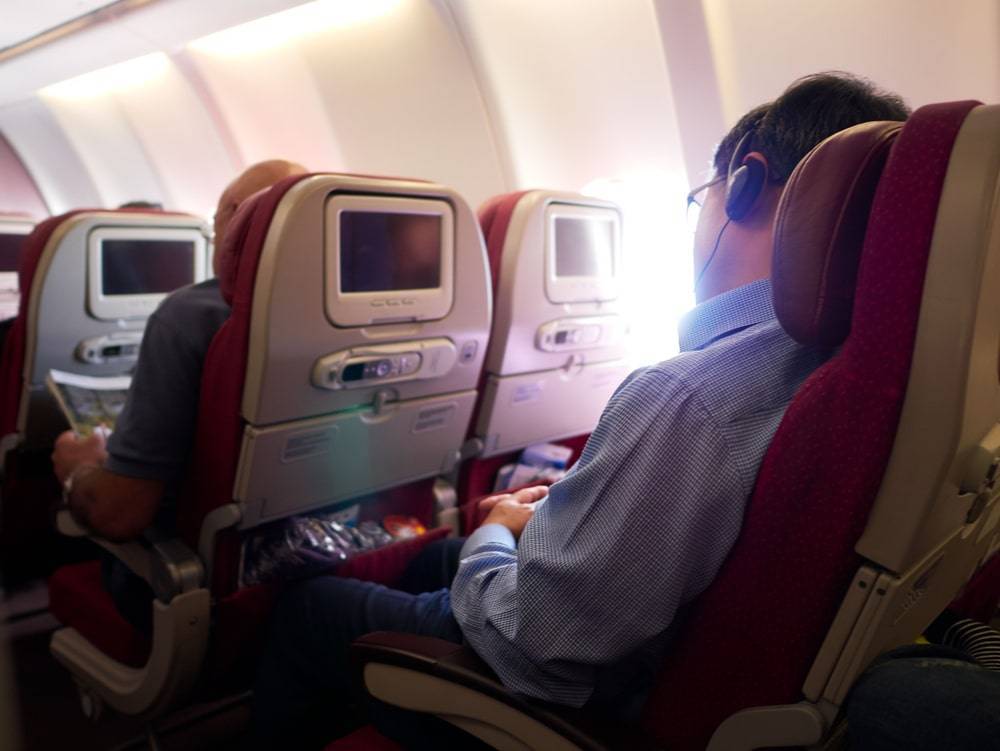Navigating the Health Challenges of Long-Haul Flights
Long-haul flights are an integral part of international travel, offering the convenience of crossing continents within hours. However, these flights can pose significant health challenges due to factors like prolonged sitting, changes in cabin pressure, and reduced air quality. By understanding these impacts and taking appropriate precautions, travellers can mitigate the risks and maintain their physical health during and after their journey.
The Physical Toll of Prolonged Sitting on Long-Haul Flights
Prolonged sitting on long-haul flights significantly contributes to the risk of deep vein thrombosis (DVT) due to restricted blood flow in the lower extremities, which can lead to clot formation.
Studies demonstrate a clear relationship between prolonged air travel and increased incidence of venous thromboembolism (VTE), emphasising the risks of stasis from sitting, hypoxia, and dehydration during flights. It is recommended to use environmental protections and wear compression stockings to mitigate these risks.
A comprehensive literature review of DVT in air travellers reported an incidence rate of 3.72% for DVT among long-haul flight passengers, highlighting the need for effective prophylactic measures, especially in individuals with a history of thromboembolism.
Challenges of Reduced Cabin Air Quality on Long-Haul Flights
The air quality inside aircraft cabins can significantly impact passenger health during long-haul flights. Air in the cabin is often low in humidity and recycled, leading to dryness that can affect the skin, eyes, and respiratory tract. This environment can exacerbate conditions like asthma and cause discomfort due to dry mucous membranes.
Low humidity and recycled air: Prolonged exposure to low humidity and recycled air in aircraft cabins can cause dryness, impacting the skin, eyes, and respiratory tract. This environment may exacerbate respiratory conditions like asthma and lead to discomfort due to dry mucous membranes.
Volatile organic compounds (VOCs): The presence of VOCs, such as carbonyls and other chemicals, in cabin air can also impact health and comfort. These compounds tend to accumulate during flights, particularly during long-haul flights, which can cause headaches, fatigue, and respiratory issues.
Preventive measures: To alleviate symptoms associated with low cabin humidity, maintaining hydration, using moisturisers, and employing saline nasal sprays are recommended. These measures help counteract the drying effects of cabin air, ensuring comfort and reducing the risk of respiratory irritation.
The Impact of Cabin Pressure Changes During Long-Haul Flights
Changes in cabin pressure at high altitudes can cause various discomforts, known collectively as “jet bloat.” This phenomenon occurs because the lower pressure allows gases in the digestive system to expand, leading to bloating, discomfort, and sometimes pain.
Additionally, the reduced oxygen levels in the cabin can lead to mild hypoxia, manifesting as fatigue, headaches, and dizziness. Strategies such as avoiding carbonated drinks and heavy meals before and during flights can help minimise bloating, while intermittent oxygen supplementation is suggested for those particularly sensitive to hypoxia.
Mitigating Health Risks on Long-Haul Flights
To effectively manage the health risks associated with long-haul flights, passengers are encouraged to adopt the following proactive measures:
- Avoiding carbonated drinks and heavy meals: This can help minimise bloating. Consuming lighter meals and non-carbonated beverages before and during the flight reduces the volume of gas that can expand at high altitudes, thereby alleviating discomfort.
- Intermittent oxygen supplementation: For passengers particularly sensitive to changes in oxygen levels, occasional use of supplemental oxygen can help prevent symptoms of hypoxia such as headaches and fatigue. This is particularly important as the aircraft’s cabin pressure at cruising altitude is equivalent to being at a high altitude on land, where oxygen is less dense.
- Movement: Regularly move around the cabin. Stand up, and stretch at intervals to improve circulation and reduce the risk of DVT.
- Compression Stockings: Wear compression stockings to promote blood flow in the legs.
- Hydration: Drink water frequently to stay hydrated. Avoid excessive alcohol and caffeine, which can lead to further dehydration.
- Saline Nasal Sprays: Use saline nasal sprays to keep nasal passages moist, counteracting the dry cabin air.
- Moisturising Lotions: Apply moisturising lotions to keep skin hydrated and prevent dryness.
- Nutritional Balance: Maintain a balanced intake of nutrients and fluids, as recommended by nutrition studies, to avoid complications related to dehydration.
Ensuring Health on Long-Haul Flights
Long-haul flights, while essential for global travel, come with inherent health risks that can impact passengers’ comfort and well-being. By understanding the physical challenges posed by prolonged sitting, reduced cabin air quality, and changes in cabin pressure, travellers can take effective measures to protect their health.
Implementing strategies such as regular movement, appropriate hydration, and using supportive accessories like compression stockings are critical for minimising the adverse effects of long flights. With thoughtful preparation and proactive health management, passengers can ensure a healthier and more comfortable travel experience.
References
- Adi Y, Bayliss S, Rouse A, Taylor RS. The association between air travel and deep vein thrombosis: systematic review & meta-analysis. BMC Cardiovasc Disord. 2004 May 19;4:7. doi: 10.1186/1471-2261-4-7. PMID: 15151705; PMCID: PMC434500.
- Hamerlynck JV, Middeldorp S, Scholten RJ. Uit de Cochrane Library: door dragen van elastische kousen tijdens langeafstandsvluchten minder kans op asymptomatische diepe veneuze trombose [From the Cochrane Library: wearing compression stockings during long-distance flights reduces the risk of asymptomatic deep-vein thrombosis]. Ned Tijdschr Geneeskd. 2006 Nov 11;150(45):2486-8. Dutch. PMID: 17137096.
- Rayman RB. Cabin air quality: an overview. Aviat Space Environ Med. 2002 Mar;73(3):211-5. PMID: 11908887.
- Gavish, I., & Brenner, B. (2010, November 6). Air travel and the risk of thromboembolism. Internal and Emergency Medicine, 6(2), 113–116. https://doi.org/10.1007/s11739-010-0474-6
- Yin, Y., He, J., Pei, J., Yang, X., Sun, Y., Cui, X., Lin, C., Wei, D., & Chen, Q. (2021, July 9). Influencing factors of carbonyl compounds and other VOCs in commercial airliner cabins: On‐board investigation of 56 flights. Indoor Air, 31(6), 2084–2098. https://doi.org/10.1111/ina.12903
- Hocking, M. (1998, July). Indoor Air Quality: Recommendations Relevant to Aircraft Passenger Cabins. American Industrial Hygiene Association Journal, 59(7), 446–454. https://doi.org/10.1080/15428119891010181

